|


      
|
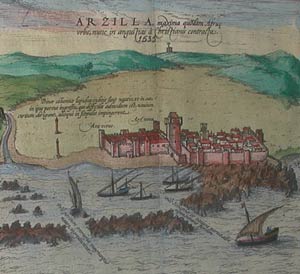 As
a Portuguese held port, Asilah would have been harbor to many a Christian
ship. While most Moroccan ports hosted Christian ships at some time or
another, these were mostly commercial and merchants ships- usually from
Venice or Genoa. Leo mentions this commercial activity in his description
of Badis, for example. Asilah would have
received a greater variety of ships- merchant, of course, but also war,
or exploration ships. As
a Portuguese held port, Asilah would have been harbor to many a Christian
ship. While most Moroccan ports hosted Christian ships at some time or
another, these were mostly commercial and merchants ships- usually from
Venice or Genoa. Leo mentions this commercial activity in his description
of Badis, for example. Asilah would have
received a greater variety of ships- merchant, of course, but also war,
or exploration ships.
The
following are example of ships which roamed the Mediterranean and Atlantic
waters, on either merchant, military or exploration missions. Try to identify
the ships that are depicted on this 1535 painting of Asilah.
Merchant
Ships:

Venetian Merchantman (1300)
Trade ship used by the Republic of Venice
|
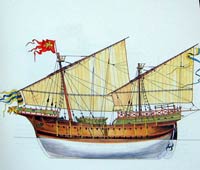
Argosy
(late 14th c)
Possibly named after Ulysses Argo, this trade ship was versatile and
ideal for both rough and calm waters. Frequently used in Mediterranean |
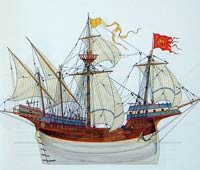
Barca Pantafola, 1520
Typical Venice trade ship in early 16th c. Means 'slipper boat'- comfortable
in shape and size. Cabins for officers and merchants sailing with
their cargo were provided in the space under the deck. |
War Ships:
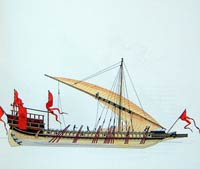
Venetian
war Galley (1480)
Galleys date from about 3000 BC and remained in use as fighting
ships almost until modern times. Long, lean and low, the galley's
ram and oars enable it to enter and leave port much more easily
than a sailing ship. |
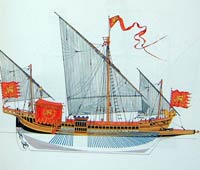
Venitian Great Galley (late 15thc.)
Used for war, but also for civilian transport and pilgrimage.
Longer, wider and deeper than the normal galley, this ship could accomodate
250 tons of cargo and 120 pilgrims. 180 oarsmen assured the ships
speed! |
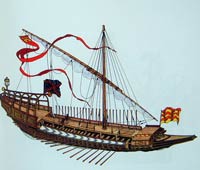
Spanish Galley (1550)
Typical Venice tradeship in early 16th c. Means 'slipper boat'- comfortable
in shape and size. Cabins for officers and merchants sailing with
their cargo were provided in the space under the deck. |
Caravels and
Exploration ships:
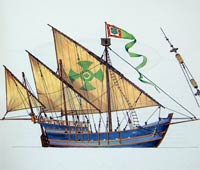
Caravela Latina (1480)
Sailing vessel best known for Spanish and Portuguese discovery undertaken
in 15th c.
Had many uses: coastal traders, dispatch boats, pirate boats,
patrol boats and most commonly fishing boats.
|
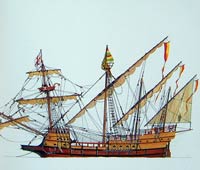
Iberian
Caravel (1535)
Caravels were good ships for unknown waters, hence used for war
and exploration.
This advanced model combined lateen sail, good for sailing closer
to winward, and square sail, good for following wind.
|

It would seem that most of the boats depicted in the above painting
small boats, with one of two sails, all lateen- the boats resemble
caravels.
|
Today,
Asilah's port is harbor to small fishing boats, row boats, and the occasional
sail boat. The days of exploration and swift caravels are over!
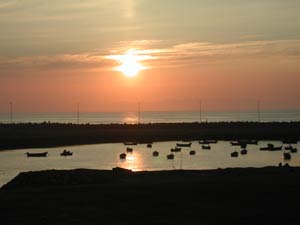
|